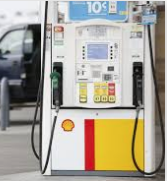Stable global oil prices and modest domestic demand for gasoline prompted the national gas price average to fall another nickel in the past week to $3.90, as consumers continue to enjoy lower prices when they fill up. But with hurricane season entering its peak time of the year, it’s hard to predict if gas prices will avoid the impact of tropical storms.
“Drivers are benefiting from gas prices that are $1.11 less than the peak seen in mid-June,” said Lori Weaver Hawkins, public affairs manager, AAA Blue Grass. “But it is hard to predict whether we’ll see continued smooth sailing or disruptions due to tropical storms. We are keeping an eye on the weather as the height of hurricane season arrives. If we avoid the impact from catastrophic storms, motorists could see prices continue to fall.”
Weaver Hawkins adds that storms can affect prices by disrupting oil production in the Gulf of Mexico and impacting large coastal refineries.
“As with a lot of factors affecting gas prices, the potential impact that the upcoming hurricane season may have on gas prices can be difficult to forecast,” she said.

The National Oceanic and Atmospheric Administration (NOAA) has predicted an “above-average” 2022 Atlantic hurricane season. NOAA predicted 14 to 21 named storms, including three to six major hurricanes. Late August through September is typically considered the height of the Atlantic hurricane season in the U.S.
Although gasoline demand has risen and supplies have tightened, easing oil prices has helped lower pump prices. If oil prices edge lower, drivers will likely continue to see falling pump prices. According to data from the Energy Information Administration (EIA), gas demand rose slightly from 9.12 million barrels a day to 9.35 million barrels a day last week, which is nearly identical to this time last year. Total domestic gasoline stocks decreased by nearly 5 million barrels to 215.7 million barrels.
The national average of $3.90 is 51 cents less than a month ago but 74 cents more than a year ago.
Kentucky’s gas price average is now at $3.50, which is 5 cents lower on the week, less of a decrease than the last several weeks. Today’s price is 56 cents lower on the month, but still 64 cents higher than a year ago.
Gas prices in Lexington are averaging $3.58, which is 10 cents lower on the week and 65 cents lower on the month. The average price in Lexington a year ago was $2.89.
The average gas price in Ashland is now $3.80. That’s 10 cents lower than a week ago and 69 cents lower than a month ago. The average price for Ashland a year ago was $3.06.
There are now 24 counties in Kentucky averaging at or below $3.33 a gallon. The state’s lowest county-level average can be found in Simpson County at $3.19. The counties with the highest average are Elliott and Magoffin counties at $3.99.
For those planning to travel around the region, the average price for a gallon of unleaded today in Ohio is $3.65, West Virginia $3.88, Virginia $3.69, Tennessee $3.44, Indiana $3.90, Illinois $4.25 and Missouri $3.46.
The western region of the U.S., as well as New York and Illinois, have considerably higher gas prices than many states to the south. Only two states in the nation still average above $5 a gallon mark.
The highest spot in the nation remains California, now at $5.32 after only an 4-cent drop on the week, followed by Hawaii at $5.31, which fell just 5 cents on the week.
Arkansas has the lowest statewide gas price average in the nation today, currently at $3.40, followed by Georgia and Mississippi at $3.42. .
GAS PRICES FROM AAA

Quick Stats
The nation’s top 10 largest weekly decreases: Florida (−12 cents), West Virginia (−11 cents), Maine (−11 cents), New Jersey (−11 cents), Rhode Island (−11 cents), Vermont (−11 cents), Massachusetts (−11 cents), Wyoming (−10 cents), Connecticut (−10 cents) and Mississippi (−10 cents).
The nation’s top 10 least expensive markets: Arkansas ($3.41), Mississippi ($3.43), Georgia ($3.43), Texas ($3.44), Tennessee ($3.44), Louisiana ($3.46), South Carolina ($3.46), Missouri ($3.47), Alabama ($3.47) and Kansas ($3.48).
Oil Market Dynamics
At the close of Friday’s formal trading session, WTI increased by 27 cents to settle at $90.77. Although crude prices increased at the end of the week due to EIA reporting that total domestic crude supply decreased by 7 million bbl to 425 million bbl, crude prices declined earlier in the week after U.S. housing data showed that homebuilding dropped to its lowest level in 1.5 years in July. Higher mortgage rates, alongside the rising costs of materials, played a role in decreasing the demand for new housing. Lower housing demand also pushed oil demand expectations lower. If crude demand expectations remain low this week, crude prices could decline further.
Drivers can find current gas prices along their route with the free AAA Mobile app for iPhone, iPad, and Android. The app can also map a route, find discounts, book a hotel, and access AAA roadside assistance. Learn more at AAA.com/mobile.
Fuel-saving Tips from AAA
Whether you’re planning a trip across the country, or just across town, AAA offers the following advice to help drivers save at the pump:
• A vehicle that’s been maintained will help you maximize your miles per gallon. Make routine vehicle inspections a part of your regular routine. Plus, here’s a step you can take on your own: make sure your tires are properly inflated. Underinflated tires are a drag on fuel economy. Check tire pressure at least every other week and more often when temperatures are fluctuating.
• Find the shortest route to your destination and map it out before you go to minimize unnecessary turnarounds, idling and backtracking. Avoid peak traffic times because you get zero miles to the gallon when you’re sitting still in traffic. If possible go to “one-stop shops” where you can do multiple tasks (banking, shopping, etc.).
• Fuel economy peaks at around 50 mph on most cars, then drops off as speeds increase. Reducing highway speeds by 5 to 10 mph can increase fuel economy by as much as 14%. Surpassing the posted speed limit is not only against the law and increases the risk of crash severity, but also reduces your gas mileage.
• A car engine consumes one quarter to one-half gallon of fuel per hour when idling, but a warm engine only takes around 10 seconds worth of fuel to restart. Where safe to do so, shut off your engine if you will be stopped for more than a minute. Remember, idling gets you 0 miles to the gallon.
• Use “fast pass” or “express” toll lanes to avoid unnecessary stops or slowdowns on the highway.
• Only use premium gas in vehicles that require it. Paying for premium gas for a vehicle that takes regular is a waste of money and is of no benefit to the vehicle.





















